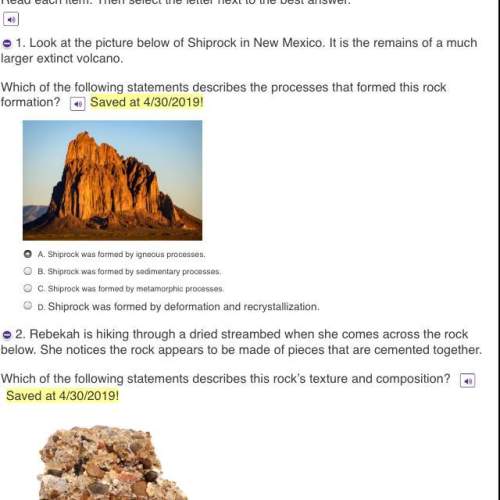
Biology, 08.06.2021 18:40 antonio9768
Most grasses of the prairies .
grow in tufts
are sod-forming grasses
grow in clumps
are bunchgrasses

Answers: 2


Another question on Biology

Biology, 21.06.2019 20:30
For your initial isolation of the bacterium, you simply needed to grow enough of it that you could identify some of its more general features. thus, you used a complex nutrient agar that would allow for the growth of almost any bacterial species. different bacterial species often have very specific requirements for life. this is a fact that you can utilize when you are trying to identify the bacterium to the species level. growth conditions that will permit the growth of one species but not another may allow you to select which one you would like to culture. you can utilize different selective/differential media that allow for the growth of only one type of bacteria (e.g., either gram positive or gram negative). culturing media such as phenylethyl alcohol or sodium chloride agar will be selective/differential for gram-positive bacteria. you may also want to show that it is different from other bacteria that may be present, so you could use a selective/differential agar. selective/differential media such as blood agar or phenol red sugar broths allow for the determination of whether a bacterial cell can grow and utilize specific ingredients included in the medium and turn the agar a distinct color. sheep's blood agar utilizes red blood cells to differentiate which bacterial species may have hemolytic properties.selective or differential? 1. an agar that uses a high salt concentration to limit the growth of one type of bacteria over another would be considered selective/differential. 2. if an agar contains a dye or ph indicator in the presence of a sugar, it is generally considered selective/differential for those bacteria that may ferment the sugar over those that cannot. 3. an agar that uses the dye in crystal violet agar suppresses the growth of gram-positive bacteria. this agar would be considered selective/differential. 4. the selective/differential aspect of macconkey agar allows for the determination of which bacteria are lactose fermenters and which are not. 5. a blood agar plate contains sheep red blood cells and allows for the determination of hemolytic capabilities for all bacteria that grow on the agar. this would make this type of agar selective/differential. 6. emb agar uses lactose and two dyes that allow it to be selective/differential between the blue-black colonies of e. coli and the pinkish colonies of all other enteric bacteria. 7. bile salts in macconkey agar allow for the agar to be selective/differential for the growth of enteric gram-negative bacteria over gram-positive bacteria. 8. an agar that allows for the distinction of bacteria based on metabolism would be considered selective/differential.
Answers: 1

Biology, 22.06.2019 04:30
The picture showed normal blood cells which are around and sickle cells which appear much longer people with sickle-cell suffer from the sickle cell anemia which is inherited diseaseit is caused by a change in gene responsible for production of hemo goblin this type of change is known as an
Answers: 2

Biology, 22.06.2019 05:00
What is the farthest destination to date for a human spaceflight mission?
Answers: 1

Biology, 22.06.2019 08:00
Aparent with freckles is crossed with a parent without freckles. the punnett square shows the possible genotypes and phenotypes of the offspring. which statement accurately describes the probability of phenotypes? a.the offspring are more likely to have freckles. b.the offspring are more likely to have no freckles. c.the likelihood of the offspring having freckles and not having freckles is the same. d.the likelihood of the offspring having freckles and not having freckles cannot be determined.
Answers: 1
You know the right answer?
Most grasses of the prairies .
grow in tufts
are sod-forming grasses
grow i...
are sod-forming grasses
grow i...
Questions


Mathematics, 21.06.2020 21:57








Social Studies, 21.06.2020 21:57



Mathematics, 21.06.2020 21:57


Mathematics, 21.06.2020 21:57




Mathematics, 21.06.2020 22:57




